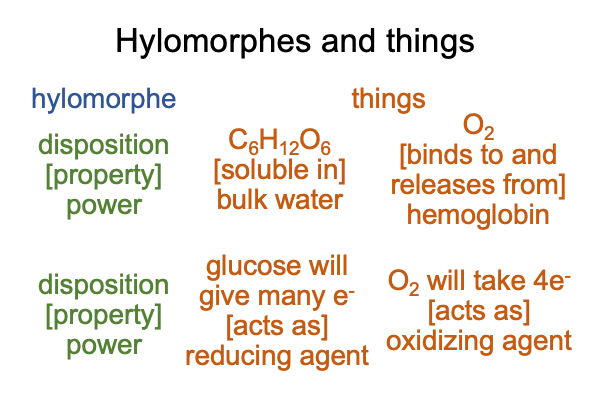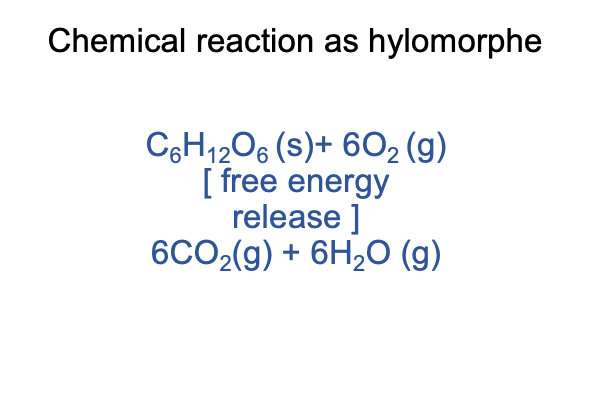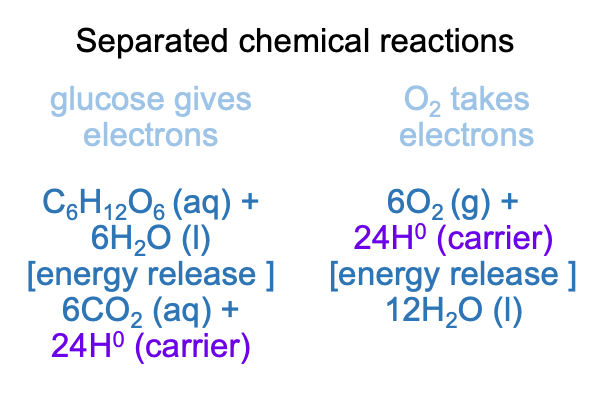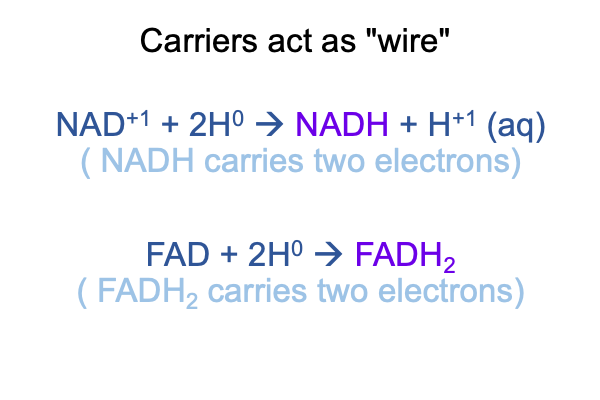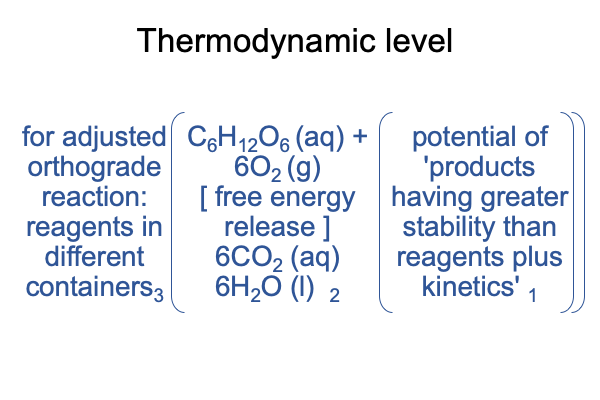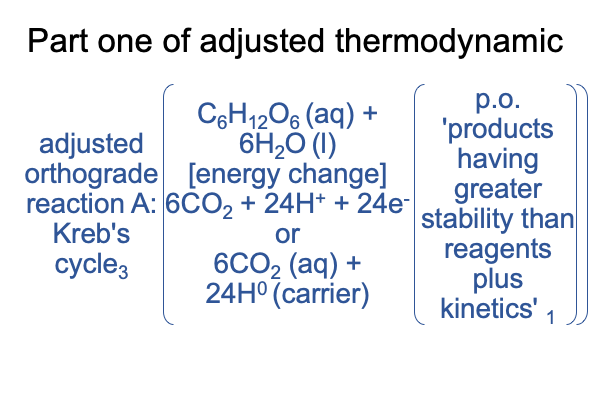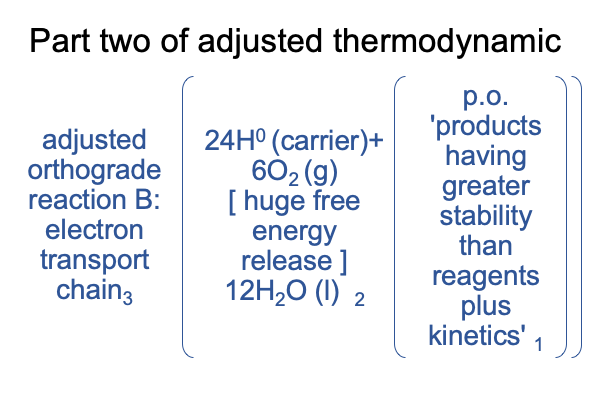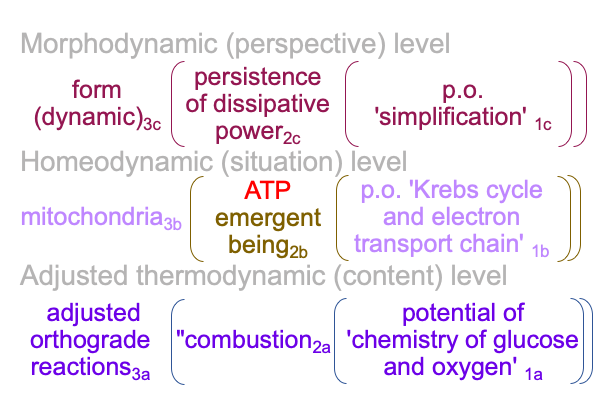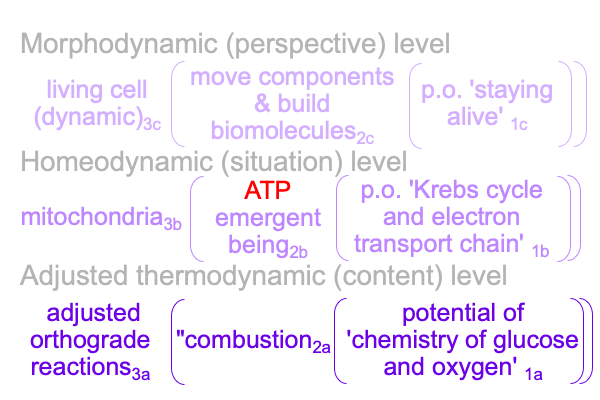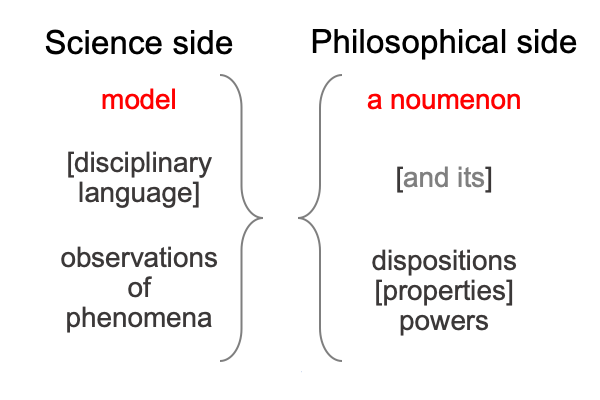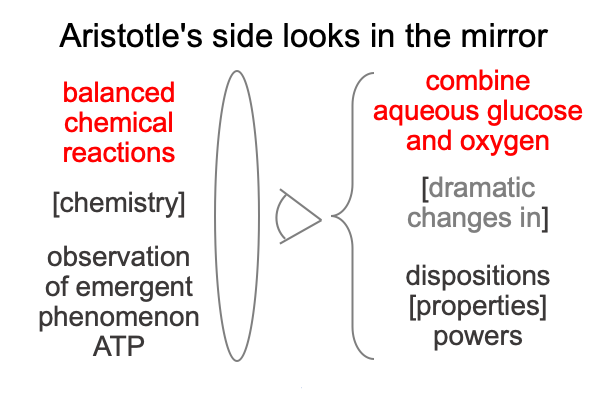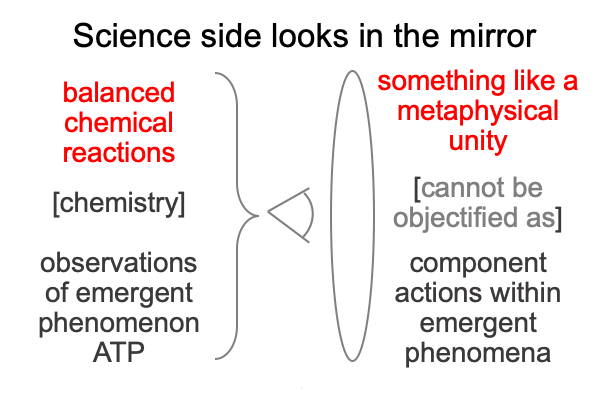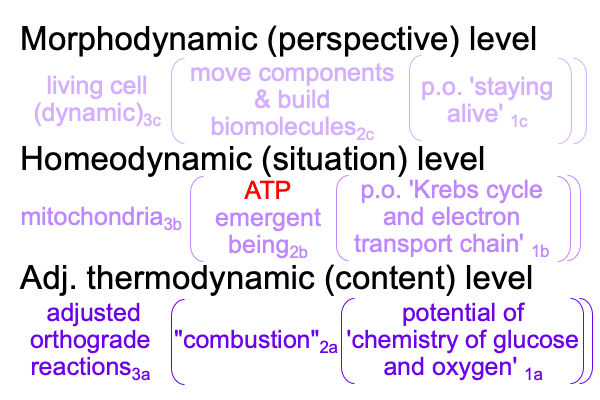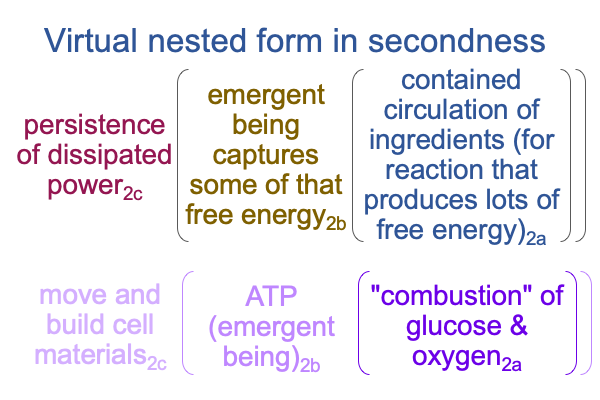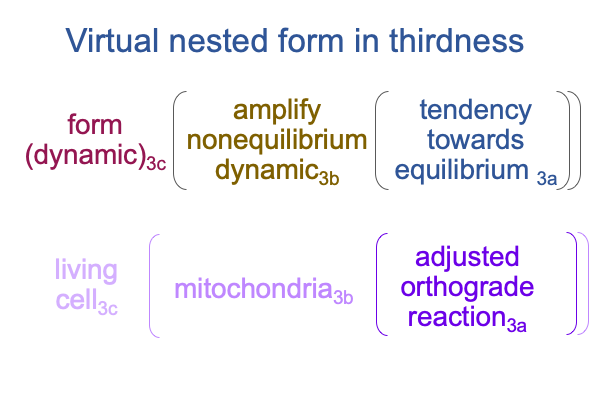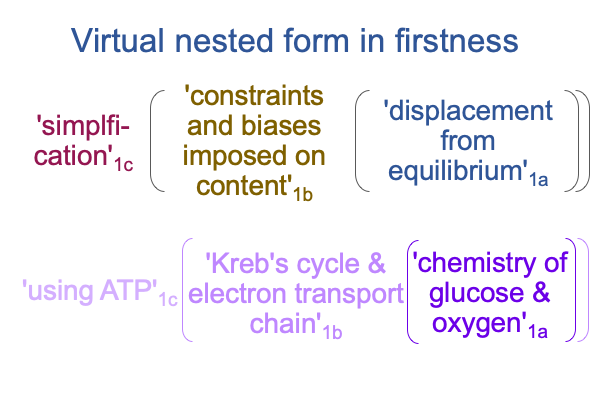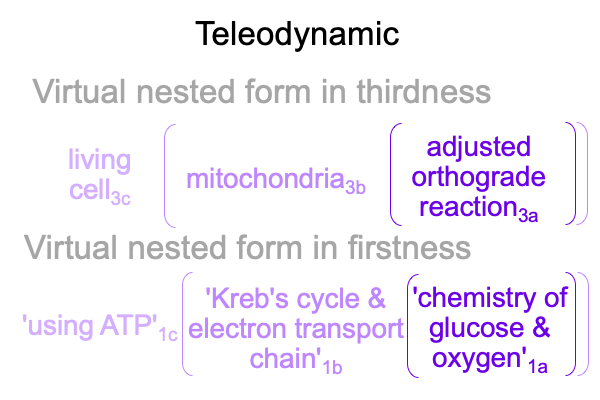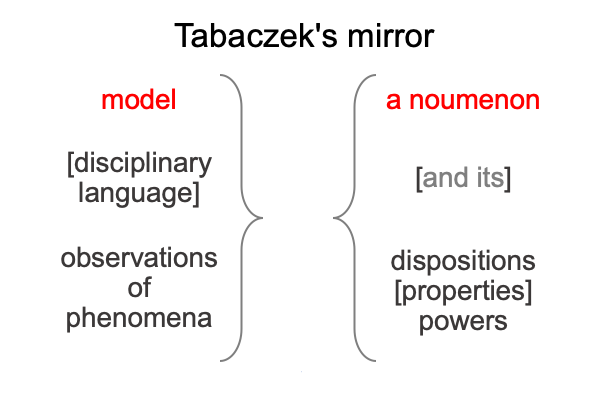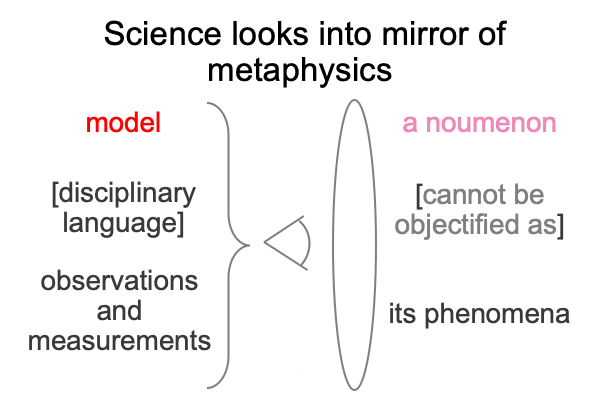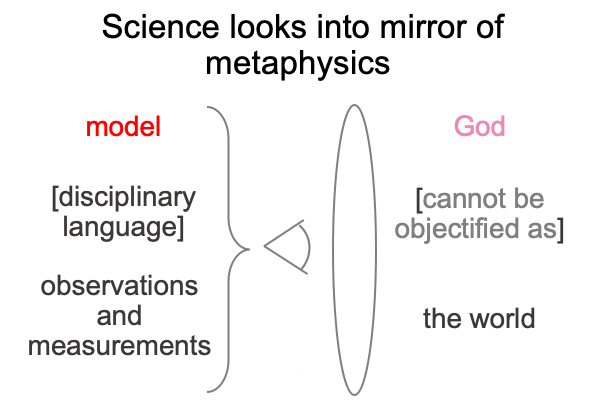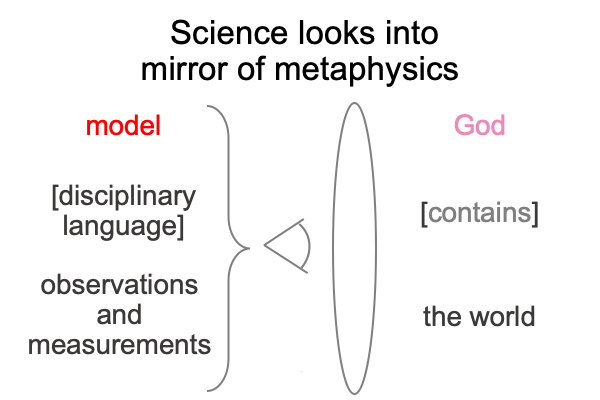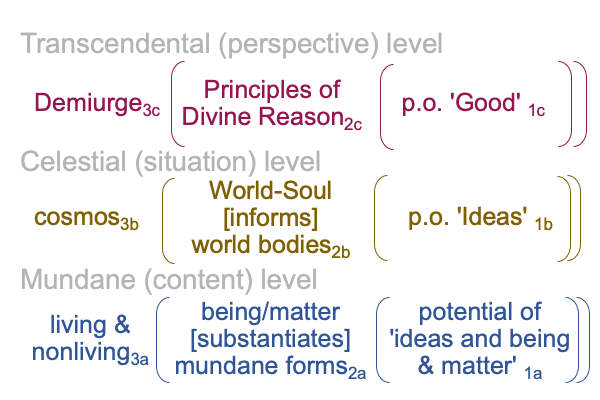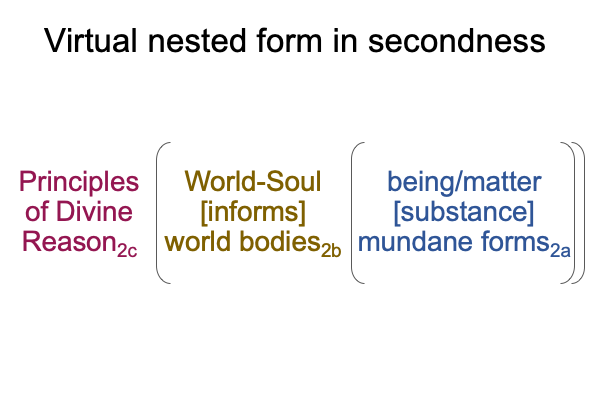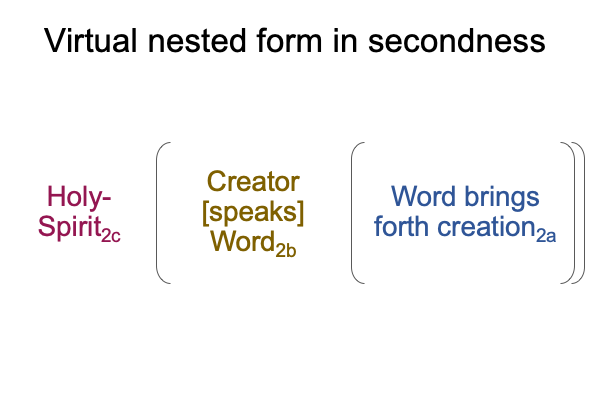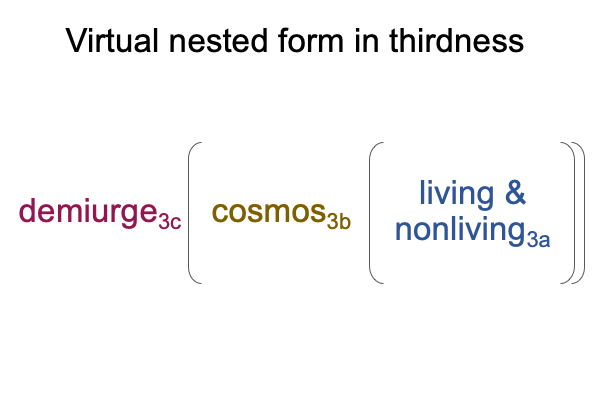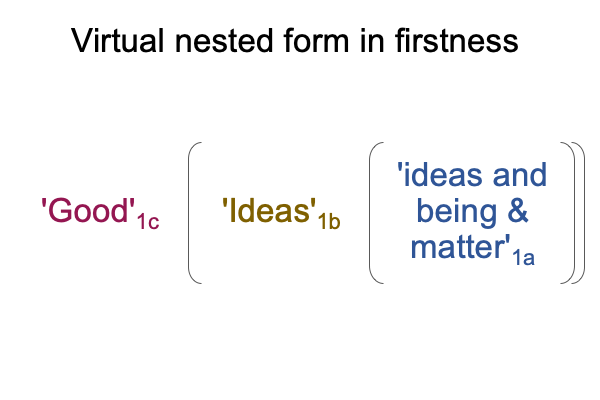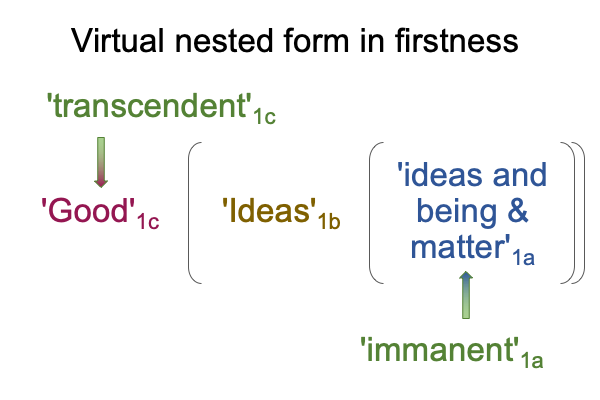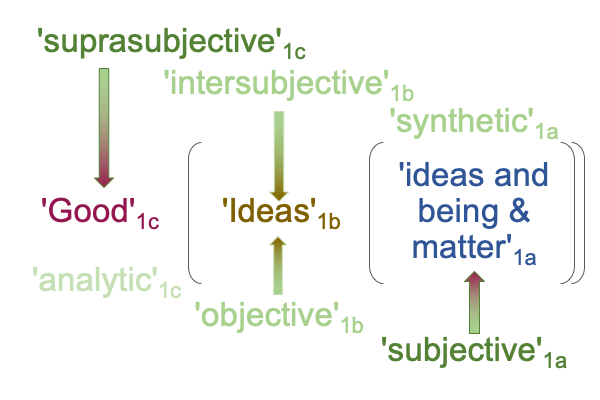Looking at Mariusz Tabaczek’s Book (2021) “Divine Action and Emergence” (Part 10 of 22)
0240 Sections 2.1.2 through 2.1.4 set forth Aristotle’s four causes along with hylomorphism.
The previous figure covers that territory, but it does not cover the distinction between primary and secondary matter, as well as other distinctions.
The previous figure also covers the interrelatedness of causes discussed in section 2.1.5. Plus, it visualizes the importance of the hylomorphe as an exemplar of and a gateway to Peirce’s category of secondness.
0241 So far, I present a fairly simple example of a motor driven by a hydrogen-oxygen fuel cell. This example dovetails into a general picture of Deacon’s science-loving portrayal of emergence, as an interscope.
Here is a diagram.
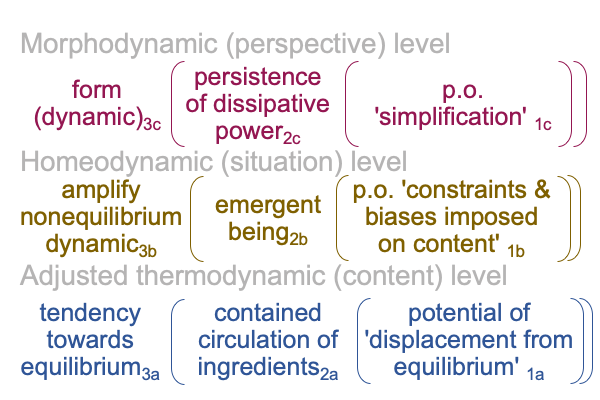
0242 This diagram serves as a map for the next example.
Respiration in multicellular animals depends on special cellular organelles, called mitochondria.
Mitochondria live in eukaryotic cells. The scientific project to discover how they conduct the biochemistry of respirationis one of the great successes of science. In order to do so, scientists did not change the conditions of the mitochondria, but they did something similar. They labeled each specific carbon in glucose with a radioactive carbon. They traced each of the six positions through the Krebs cycle. Then they “reverse engineered” the metabolic pathways.
0243 In terms of inquiry, these investigators consider respiration2 as an actuality. They already know that respiration2requires mitochondria within a eukaryotic cell3. Indeed, mitochondria3 provide the normal context for respiration2. Also, scientists already know that many cellular processes require ATP or similar high-energy phosphate carriers. I could describe ATP as adenosine-PiPiPi, where Pi is a phosphate. The third Pi pops off with enough energy that cellular work can get done.
0244 Here is an initial nested form for respiration.
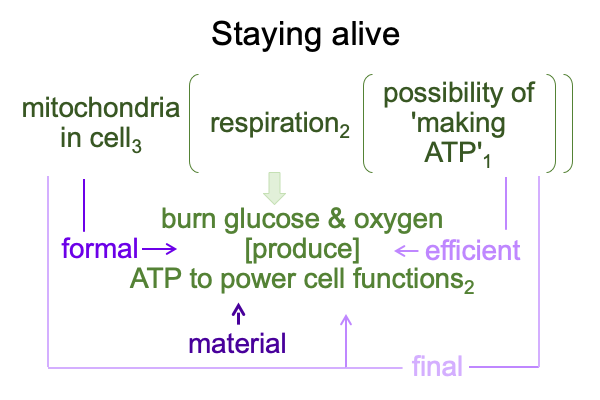
0245 Plus, here is how some of these terms might enter into Deacon’s interscope.
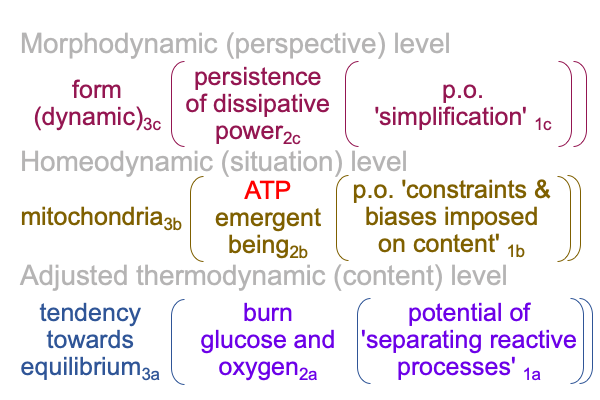
0246 Now, I want to clarify. I am standing on Tabaczek’s “metaphysical” side of the mirror. But, I am talking about natural philosophy. So, I am looking into the scientific domain of truncated material and efficient causalities, as if it were a reflection of what nature is doing.
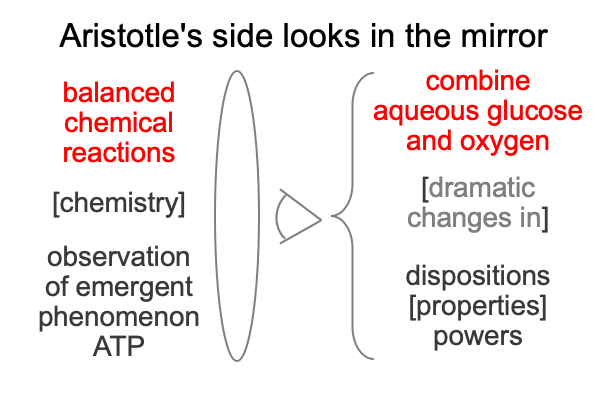
This view is not the same as triumphalist science, which would replace the noumenon with chemical models and reduce mitochondria to “little laboratories producing ATP”. Nor is this view the same as logical positivism, which would claim that the positivist intellect is… ahem… still alive. This view sees a reflection in modern scientific inquiry into the phenomena of respiration. My goal is not to technologically manipulate respiration (as desired by many corporate sponsors of modern science). My goal is to appreciate the thing itself.

